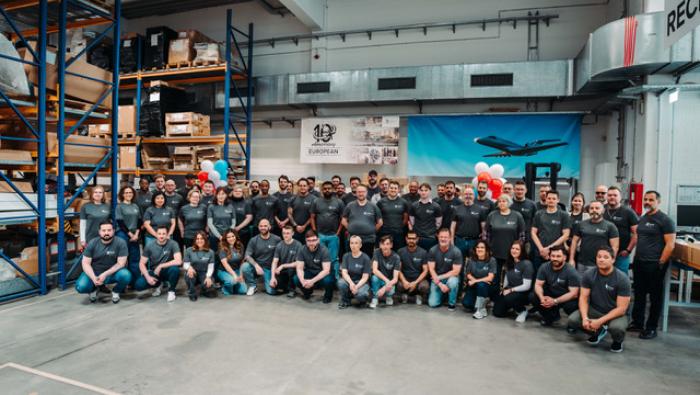What started seven years ago as a modest line maintenance operation has grown to become a consistent source of revenue and cost savings for Clay Lacy Aviation and a wellspring of value for its clients. Now concentrated on the east and west coasts of the U.S., the company’s MRO operation employs more than 120 technicians and support staff at Van Nuys Airport in Los Angeles and another 60 at Waterbury Oxford Airport in Connecticut. Meanwhile, several mobile response teams support AOG needs, most notably at Teterboro Airport in New Jersey, where the company’s charter fleet operates some 800 flights a year.
Today, Clay Lacy maintains not only its own fleet but a transient population of aircraft that accounts for 40 percent of its business at Van Nuys, for example. “About six years ago we started realizing the potential,” recalled Clay Lacy senior vice president of business operations Ed Mirzakanian. “So, we started investing heavily in training our employees and tooling, aircraft, specialty tooling, heavier equipment, and so forth and got to the point where we realized that we needed dedicated hangar space for maintenance. That's when we started getting into heavier scheduled events."
Mirzakanian explained that the move helped bring not only capability but flexibility to reschedule maintenance events based on customer need or to apply extra manpower for a quicker turnaround, for example.
“The second part was the volume of traffic going through and based at [Van Nuys],” he added. “The cost of relocating an airplane to a larger facility was climbing and continues to go up. The cost of fuel, the cost of pilots, transporting the crew, the cost of oversight when the aircraft is away—all of that adds up. To put it in perspective, the cost of oversight and relocating an aircraft to a facility that’s two hours away from Van Nuys for a project that takes three weeks to a month is over $35,000.”
Soon, more opportunity arose in the form of Embraer, which named Clay Lacy an authorized service facility for the Phenom, Praetor, and Legacy airframes as a growing number of those aircraft moved into Southern California. Next came Honeywell, for which Clay Lacy serves as an authorized provider of avionics support and a selling agent for that equipment as well as engines and APUs. Other OEMs took notice and soon came authorized dealerships with Gogo, Collins, Garmin, and, most recently, Viasat, for which Clay Lacy serves as an authorized dealer and heavy installer for larger aircraft. The company now has positioned itself for further growth with the start of construction of three 40,000-sq-ft hangars in Waterbury. The company expects to open the first phase of this project in 2025 and the rest in 2026.
Mirzakanian acknowledged that a shortage of mechanics has hindered further expansion in California in particular, however. “Certain regions of the country are getting hit harder than others,” he said, adding that the number of A&P programs in the region around Van Nuys has shrunk from some 15 in the early 1990s to just one today, namely West Valley Occupational Center at Van Nuys Airport.
“Overall, there has been a decline in the number of young people interested in becoming aviation technicians in Southern California,” he noted. “And the talent is down. We don’t see the craftsmen who used to want to get into this through an A&P program show any interest anymore. So, recruitment has been our biggest hurdle in Southern California.”
Conversely, added vice president of aircraft maintenance operations Mike Montgomery, Clay Lacy has enjoyed a more ready supply of technicians in the Northeast. “We’re kind of living in two worlds,” he explained. “I was up in Oxford just a couple of weeks ago and the talent pool there is pretty deep.”
Meanwhile, the industry’s supply-chain conundrum has hit Clay Lacy hard, particularly as it applies to brake assemblies and tires. Turnaround times have lengthened considerably, and the resulting planning burden has added a lot of expense.
“[Tire supply] had started to get better and everybody in the industry was becoming more confident with our vendors, and now we’re back in that again,” said Montgomery. “I think some of the MROs have gotten their hopes up, but at the end of the day, it’s still a challenge because we want to be able to count on our vendors so we can deliver the right message to owners.”
Mirzakanian noted that turn times have at least doubled in many cases as aircraft sit on jacks waiting for brake assemblies, for example. “A job that you would be able to turn in two weeks now may take a month or two,” he said. “So, for example, we’re having to purchase parts upfront just in case we need them. And then when you ship them back you pay a hefty restocking fee. But that has become part of the cost of doing business for us.”







